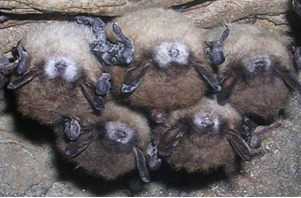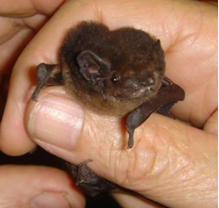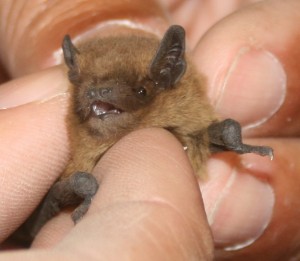Bat Removal | Bat Exclusion
Being mammals of the Chiroptera order, bats are naturally capable of sustained flights through their webbed wings. Having 1,240 species, (only about 40-60 of which live in the U.S.) some bats feed on fruits or insects (about 70%) while others feed on blood. Bats perform vital ecological roles including the dispersion of fruit seeds and pollination of flowers.
Aside from consuming insects therefore reducing the need to use pesticides, numerous plant species also rely on bats for their seed distribution.
Bats are traditionally classified into two suborders namely megabats and microbats which are capable of echolocation except for those of the Rousettus genus. It may be a relief to know there are no megabats in the United States.
Bats and Echolocation
Echolocation is a system wherein ultrasonic sounds are being emitted in order to produce echoes. Bats process the outgoing pulse and compare it to the returning echoes for their brain and auditory system to picture out detailed images of their surroundings.
This amazing ability allows them to detect and locate their prey in total darkness. Pretty amazing isn’t it?
Furthermore, bat calls are said to reach 130 decibels in intensity which is pretty much damaging for humans to take.
Below is a chart of how much decibels at an exposure length can humans take.

Behavior of Bats
Microbats are active at twilight as they are nocturnal. During winter, bats migrate to hibernation dens, caves, or even house attics for around 6 months. Bats have a low birth rate but they can live over 20 years. The behavior of different kinds of bats varies greatly with their order, family, genus, and species.
Bat Diseases
As harmless as you think they may be, decaying bat guano (droppings) is the main source of a fatal disease called Histoplasmosis. Also known as Darling’s disease, Cave disease, spelunker’s lung, reticuloendotheliosis, and Ohio Valley disease, Histoplasmosis primarily affects the lungs. It is caused by the fungus Histoplasma capsulatum that is inhaled and settled into the lungs.
Symptoms of Histoplasmosis occur mostly on the 3rd to 17th day after exposure but the average is within 12th to 14th day. Since this disease has a silent manifestation, there are no apparent ill effects aside from coughs or flu. In most cases, x-ray findings tend to be normal. If left untreated, this disease could be fatal.
Bat Rabies
Aside from Histoplasmosis, some bats also carry rabies. Rabies is a viral disease caused by lyssaviruses that is transmitted when an infected animal bites or scratches humans or another animals. It causes inflammation in the brain and is characterized by fever and tingling sensation on the area exposed.
Additional symptoms include uncontrolled excitement, violent movements, inability to move certain body parts, fear of water, loss of consciousness, and confusion. When it comes to bats, you can notice the symptoms if a bat is active in broad daylight or if a certain bat is spotted in places where they are not usually seen. Be careful when you see a bat that can be easily approached or that cannot fly as it indicates that they might be sick or infected.
Since rabies is a fatal disease, do not attempt to exclude or remove bats in your attic on your own. There is a proper way of excluding bats in your house hence they must be implemented.
Bat Removal Bat Control Methods
Due to the bats, benefits to the environment with all the insects they eat and their low birth rate, bats are under a lot of pressure ecologically. There is also a disease called White Nose Syndrome that is rapidly wiping out populations of bats. With this in mind, you should hire someone who knows how to humanely exclude bats.
Through the use of one way doors, sometimes called bat cones, the bats don’t need to be harmed when removing them from your attic. In fact, the only time a bat should be harmed is if there is a possibility that someone was bitten, in which case it should be tested for rabies.

What Is The White Nose Syndrome?
The White Nose Syndrome (WNS) is a disease spreading among hibernating bats. It has distinctive fungal growth that can be found around the wings and muzzles of these bats – many of which did not survive. In 2012, around 5.7 to 6.7 million bat deaths have been recorded in North America due to this disease.

When to Do a Bat Exclusion
There are also some time sensitive things to keep in mind when doing bat exclusions. The first is the pup rearing season. From approximately June 1st to August 15th, mother bats are raising their babies, called “pups” in the attic. They leave at dusk to feed and come back at dawn to feed the pups. If the home has been sealed up and bat cones installed, the pups would die of starvation in your attic and there could be an odor problem.
In some states it is illegal to exclude bats during this time but it is always a Best Practice.
Hire the Right Company for an Attic Cleanup
The other time when it isn’t wise to exclude bats is during the winter. Bats hibernate during the winter in Northern climates and a bat exclusion only works if the bats leave through the one way doors.
That’s why it is so important to hire the right company to do the bat exclusion. Look for someone that carries the correct licensing if your state does that, and never fail to ask questions. Find out if they observe a blackout period.
Look for a Bat Exclusion Warranty
The other thing you want to look for is a guarantee. Bats can get through a crack that is 3/8 of an inch or less. On a large house it is possible that someone can miss something but make sure they have a policy that they will warranty their work. Years is better than months when discussing a bat warranty.

In a nutshell, if you have discovered bats living in your attic, do not hesitate to call a wildlife expert. When you do make sure they are state licensed and know how to properly handle and exclude bats from your home. We suggest you go to our listing for your area and see who we recommend!
Bat Removal – Bat Exclusion
Anytime Wildlife Control
219-464-7966



